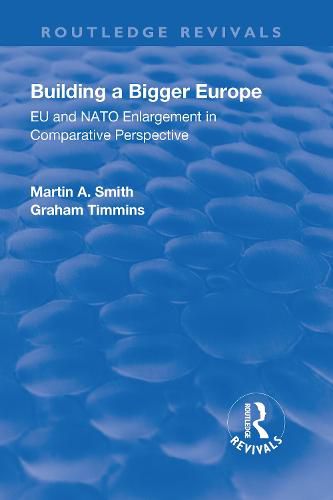Readings Newsletter
Become a Readings Member to make your shopping experience even easier.
Sign in or sign up for free!
You’re not far away from qualifying for FREE standard shipping within Australia
You’ve qualified for FREE standard shipping within Australia
The cart is loading…






This title was first published in 2000: A fresh and original study of EU and NATO enlargement, which sets both in a comparative context and considers them against a backdrop of the evolution of a pan-European security community. The book is divided into two parts. In part one the authors examine and discuss the EU and NATO enlargement processes and the ‘incremental linkage’ which has developed between them. The major issues and challenges facing the two institutions as they ponder the next steps in enlargement are also assessed. Part two includes separate chapters on the post-Cold War evolution of the EU and NATO overall. These discussions focus on their strengths and limitations in contributing to the broader and more co-operative kind of European security which the end of the Cold War makes possible. The final chapters examine a number of possible scenarios under which the EU and NATO either succeed or fail in contributing significantly to the development of a new European security order. The potential consequences for both the institutions themselves and for European security generally will be explored and assessed.
$9.00 standard shipping within Australia
FREE standard shipping within Australia for orders over $100.00
Express & International shipping calculated at checkout
This title was first published in 2000: A fresh and original study of EU and NATO enlargement, which sets both in a comparative context and considers them against a backdrop of the evolution of a pan-European security community. The book is divided into two parts. In part one the authors examine and discuss the EU and NATO enlargement processes and the ‘incremental linkage’ which has developed between them. The major issues and challenges facing the two institutions as they ponder the next steps in enlargement are also assessed. Part two includes separate chapters on the post-Cold War evolution of the EU and NATO overall. These discussions focus on their strengths and limitations in contributing to the broader and more co-operative kind of European security which the end of the Cold War makes possible. The final chapters examine a number of possible scenarios under which the EU and NATO either succeed or fail in contributing significantly to the development of a new European security order. The potential consequences for both the institutions themselves and for European security generally will be explored and assessed.